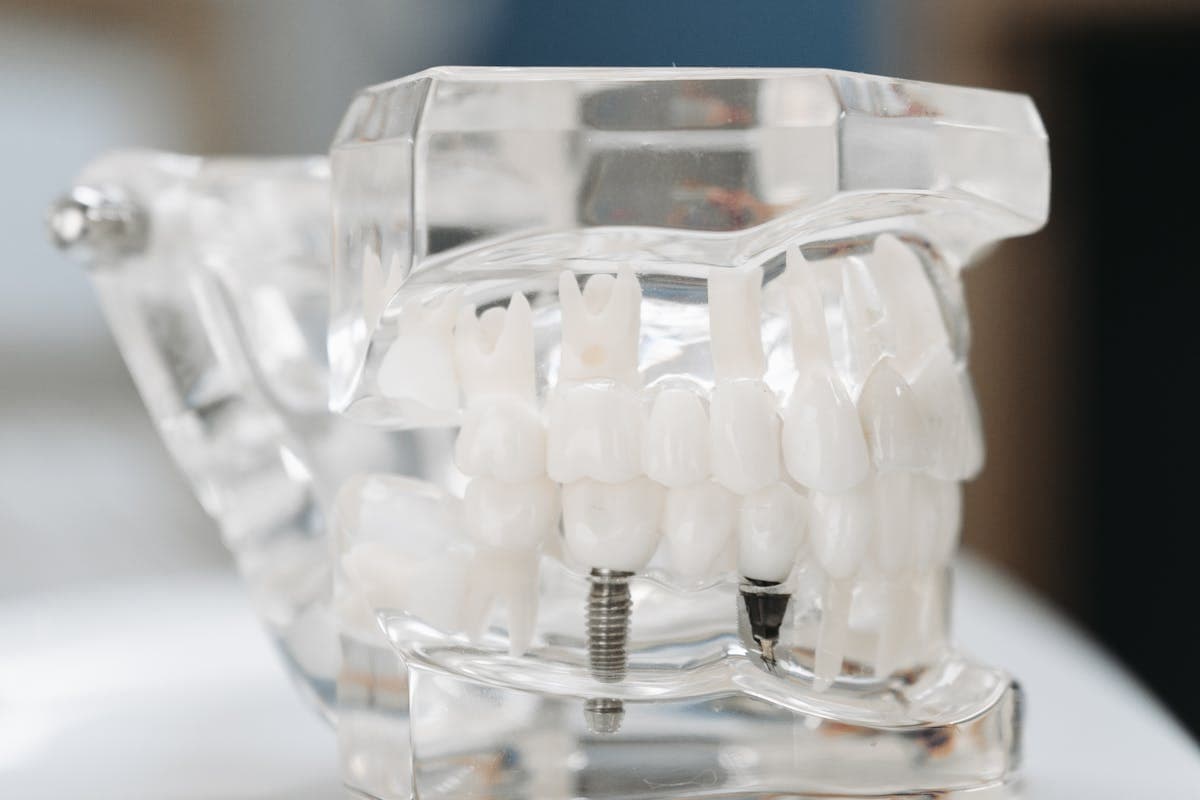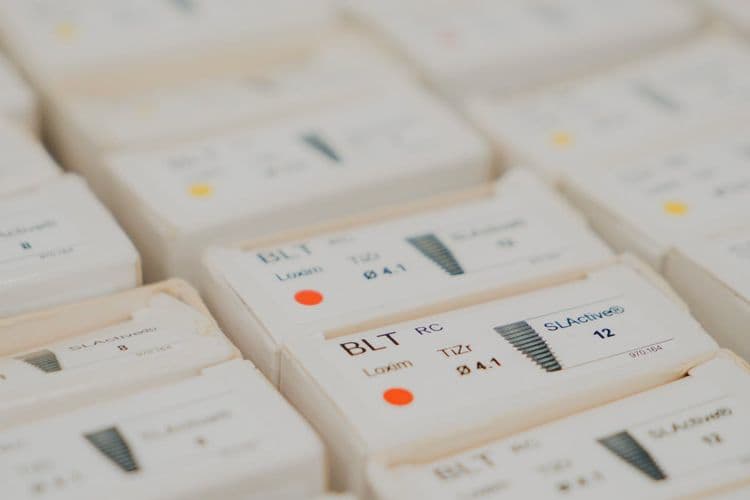As we explore the ever-evolving landscape of dentistry, one technological advancement stands out: Full Arch Hybrid Dental Implants. These state-of-the-art implants, designed to replace an entire arch of teeth, are presenting new opportunities and challenges alike in the dental fraternity. They offer a remarkable blend of durability, aesthetics, and function, but is it the ultimate solution to tooth replacement? We shall examine this intriguing innovation, understanding its components, weighing its benefits, and comparing it against other dental solutions. Is it truly as transformative as it appears? Join us as we explore this question further.
Understanding Full Arch Hybrid Implants
Although they are a relatively recent innovation in the field of dental prosthetics, full arch hybrid dental implants have quickly become a popular choice for patients seeking a long-term solution to tooth loss. These implants are designed to replace all teeth in the upper or lower arch, offering improved patient comfort, aesthetic appeal, and functionality. The unique design of these implants permits easier implant maintenance compared to traditional prosthetics. The fixed-detachable nature of the prosthesis allows dental professionals to remove it for cleaning or repair, ensuring the longevity of the implant. The biocompatible titanium used in the implants further contributes to patient comfort, reducing the risk of allergic reactions and promoting healthy integration with the jawbone.
The Evolution of Dental Implants
Tracing the trajectory of dental implant evolution necessitates an initial examination of early techniques, followed by a dissection of subsequent technological advancements. This progression has culminated in the development of modern full arch solutions, which epitomize the most recent strides in implantology. Throughout this discussion, it is essential to underscore the scientific intricacies and clinical implications underpinning each phase of this complex, transformative journey.
Early Dental Implant Techniques
The advent of early dental implant techniques marked a significant turning point in the field of dentistry. These early techniques were the foundation of modern implantology, playing a pivotal role in the implant evolution.
The early dental implant techniques consisted of:
- Subperiosteal implants: Custom-made frames fitted onto the jawbone beneath the gum tissue.
- Endosteal implants: Surgically inserted directly into the jawbone.
- Blade implants: Thin, flat, and rectangular, placed within a slot prepared in the jawbone.
- Transosteal implants: Passed through the lower jaw from the inferior border, anchoring an over-denture.
Each technique was designed to improve oral health and functionality, however, many faced challenges related to biocompatibility and implant stability. These methods paved the way for the development of more effective and reliable dental implant techniques.
Advancements in Implant Technology
Building upon these early techniques, significant advancements in dental implant technology have ushered in a new era of modern implantology. The incorporation of 3D printing and digital imaging has streamlined the creation of custom abutments, enabling precise fit and function. Biocompatible materials, such as titanium and zirconia, are utilized due to their superior osseointegration capabilities and reduced risk of rejection. Surface treatments, like sandblasting and acid-etching, enhance these properties further. Computer-guided surgery, a minimally invasive approach, allows for accurate placement of implants and immediate loading, reducing healing time. These advancements have revolutionized the field, offering patients safer, more reliable, and aesthetically pleasing solutions while expediting the overall treatment process.
Modern Full Arch Solutions
While considering the continuous evolution of dental implants, a notable development is the advent of modern full arch solutions. These offerings are a demonstration of the incorporation of modern techniques and innovative materials into dental practice.
- Modern techniques: Utilized to guarantee precise placement of implants, reducing the risk of complications.
- Innovative materials: Newer, biocompatible materials enhance the longevity and functionality of implants.
- Digital imaging: Advanced imaging techniques provide detailed views of the oral structure, guaranteeing ideal implant positioning.
- Prosthodontic design: Modern design approaches improve aesthetics and patient comfort.
These advancements not only improve the success rate of full arch dental implants but also enhance the overall patient experience. This evolution is indicative of the promising future of dental implantology.
Key Components of Hybrid Implants
The subsequent discussion will be centered on the key components of hybrid implants, specifically focusing on their structure and the process of implant placement. A detailed overview of the structural elements, including the materials used and their configurations, will provide insights into the design of these implants. The procedural aspects of implant placement, encompassing pre-operative planning, surgical techniques, and post-operative care, will also be elucidated.
Hybrid Implants Structure
In the domain of dentistry, the hybrid implant structure forms the foundation of full arch restorations. These implants are characterized by a unique structural design that utilizes specific implant materials for optimal performance and aesthetics.
The hybrid implant structure consists of the following key components: - Implant Body: Composed of titanium, renowned for its strength and biocompatibility. - Abutment: Connects the implant body to the prosthetic tooth; made of titanium or ceramic. - Prosthetic Tooth: Usually made from a blend of acrylic and ceramic, mimicking natural tooth enamel. - Screw: Secures the prosthetic tooth to the abutment; typically made of resilient materials to withstand biting forces.
Each component plays a crucial role, consequently, ensuring a robust, effective hybrid implant structure.
Implant Placement Process
Initiating the journey into the implant placement process reveals a meticulously orchestrated series of steps. First, an evaluation of the patient’s eligibility is conducted by thoroughly reviewing their dental health and bone density. The assessment determines the appropriate implant types to use, whether it be endosteal, subperiosteal, or zygomatic. Following this, a surgical guide is created to guarantee precise placement of the implants. The surgery involves embedding the implants into the patient’s jawbone, which then requires a healing period for osseointegration to occur. The final stage involves the attachment of the hybrid prosthetic to the implants. The placement process, while complex, is tailored to each patient, offering a bespoke solution for full arch restoration.

Benefits of Full Arch Implants
While many dental restoration options exist, Full Arch Implants stand out for their numerous benefits. They offer:
- Improved Aesthetics: Full arch implants provide a natural appearance, enhancing the patient’s smile and boosting self-confidence.
- Enhanced Functionality: The stability of these implants allows for ideal oral functionality, including speaking and eating, without discomfort or inconvenience.
- Durability: Full arch implants are designed to last, providing a permanent solution for patients with missing teeth.
- Bone Preservation: Unlike other dental prosthetics, these implants help maintain jawbone health, thereby preventing further dental complications.
The Procedure: Step by Step
To fully appreciate the effectiveness of Full Arch Implants, understanding the procedural steps involved is essential. Initially, a thorough pre-surgical assessment is performed, factoring in both surgical considerations and patient expectations. This includes a detailed analysis of the patient’s oral health, bone structure, and general health status.
Next, the surgical placement of implants into the jawbone takes place, typically involving four to six implants per arch. The implants, made of bio-compatible materials, serve as sturdy anchors for the prosthetic teeth.
Post-surgery, a temporary prosthetic is often affixed to the implants to aid in healing and function. After a suitable healing period, the final hybrid prosthesis, carefully crafted to match the patient’s anatomy and aesthetic desires, replaces the temporary one.
Caring for Your Hybrid Implants
Having gone through the meticulous procedure of getting hybrid dental implants, it becomes paramount to understand the correct way to care for these implants to guarantee their longevity. It is essential to adopt proper hygiene practices and establish regular maintenance routines to preserve the health and functionality of the implants.
- Regular brushing and flossing: This is integral to maintaining oral health and preventing bacterial accumulation.
- Routine dental checkups: Regular professional cleanings and implant evaluations are necessary for early detection of possible issues.
- Use of specialized cleaning tools: Interdental brushes or water flossers can aid in cleaning hard-to-reach areas.
- Avoiding hard or sticky foods: These can damage the implants, especially during the initial healing phase.
Comparing With Other Dental Solutions
Though hybrid dental implants provide a thorough solution for patients with missing teeth, it’s essential to compare them with other dental solutions for complete comprehension of their pros and cons. Traditional dentures, while less costly initially, may require adjustments or replacements over time, consequently increasing the cost comparison over the long run. Hybrid implants, though more expensive upfront, offer durability and stability that dentures cannot provide. In addition, patient experience also varies greatly. Many patients report discomfort and inconvenience with dentures due to slippage and dietary restrictions. Conversely, hybrid implants mimic natural teeth, thereby enhancing the patient’s comfort and confidence. Therefore, while both solutions address tooth loss, their cost and patient experience greatly differ.
Case Studies and Success Stories
While the comparison of hybrid dental implants with traditional dentures elucidates their respective advantages and disadvantages, real-life case studies and success stories offer tangible evidence of these benefits.
Consider these four remarkable examples: - In a recent five-year study, full arch hybrid implants demonstrated superior long-term clinical outcomes, including increased stability and reduced bone loss. - A patient testimonial from a 62-year-old man revealed a significant improvement in chewing function and overall quality of life after receiving hybrid implants. - Another case highlighted the aesthetic benefits of the treatment, with the patient expressing satisfaction with the natural appearance of their smile. - Finally, a complex case demonstrated the versatility of hybrid implants in dealing with severe bone loss, underscoring their potential in challenging situations.
These cases provide compelling evidence of the efficacy of hybrid dental implants.
Frequently Asked Questions
What Is the Average Lifespan of Full Arch Hybrid Dental Implants?
The average lifespan of this kind of implant can vary greatly, typically ranging from 15 to 20 years. Lifetime expectations depend on several durability factors such as oral hygiene, lifestyle habits, and regular professional maintenance.
Does Insurance Typically Cover the Cost of Hybrid Dental Implants?
Insurance coverage for dental implants varies greatly by provider and plan specifics. Some insurers may partially cover implant costs, while others exclude them entirely. It’s essential to thoroughly review your policy details to understand your coverage.
What Are Potential Complications or Risks Associated With Full Arch Hybrid Implants?
Potential complications associated with this procedure may include implant failure, often due to infection or overloading. Surgical risks, such as nerve damage, sinus complications, and issues with anesthesia, can also occur. Regular follow-ups help mitigate these risks.
Are Full Arch Hybrid Implants Suitable for People With Certain Medical Conditions?
Medical eligibility for any surgical procedure depends on health considerations. Certain conditions might pose a risk, therefore a thorough medical assessment is essential to determine the suitability of any invasive procedure for individual patients.
Do Full Arch Hybrid Implants Impact Speech or Eating Habits?
When properly installed, these implants should not impact speech clarity or eating comfort. Any initial difficulties usually resolve as the patient adjusts to the new dental structure, ensuring effective communication and comfortable meal consumption.


